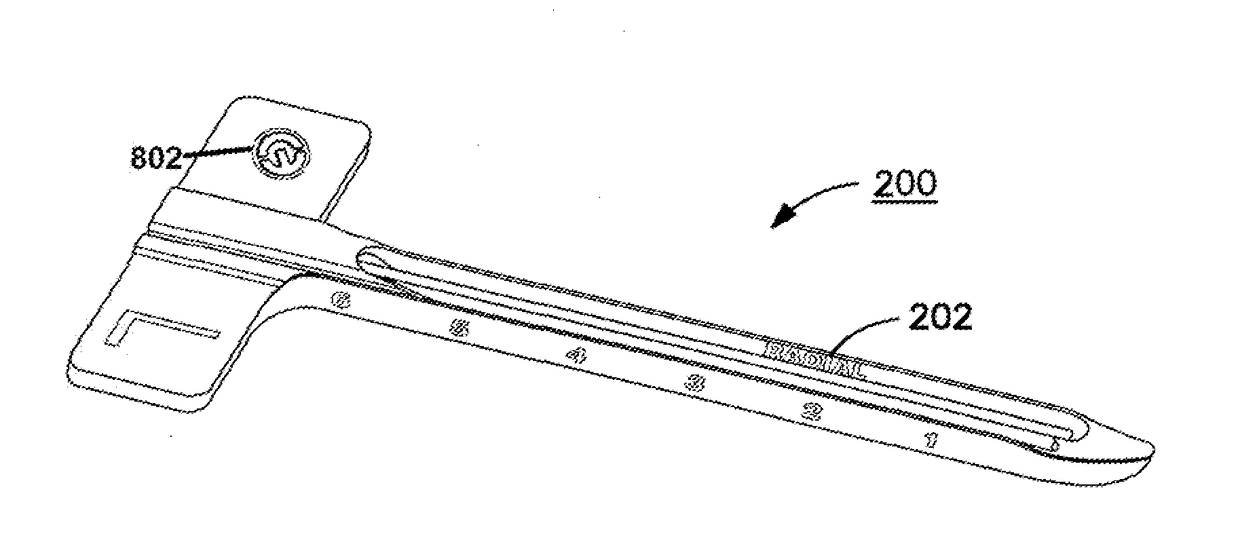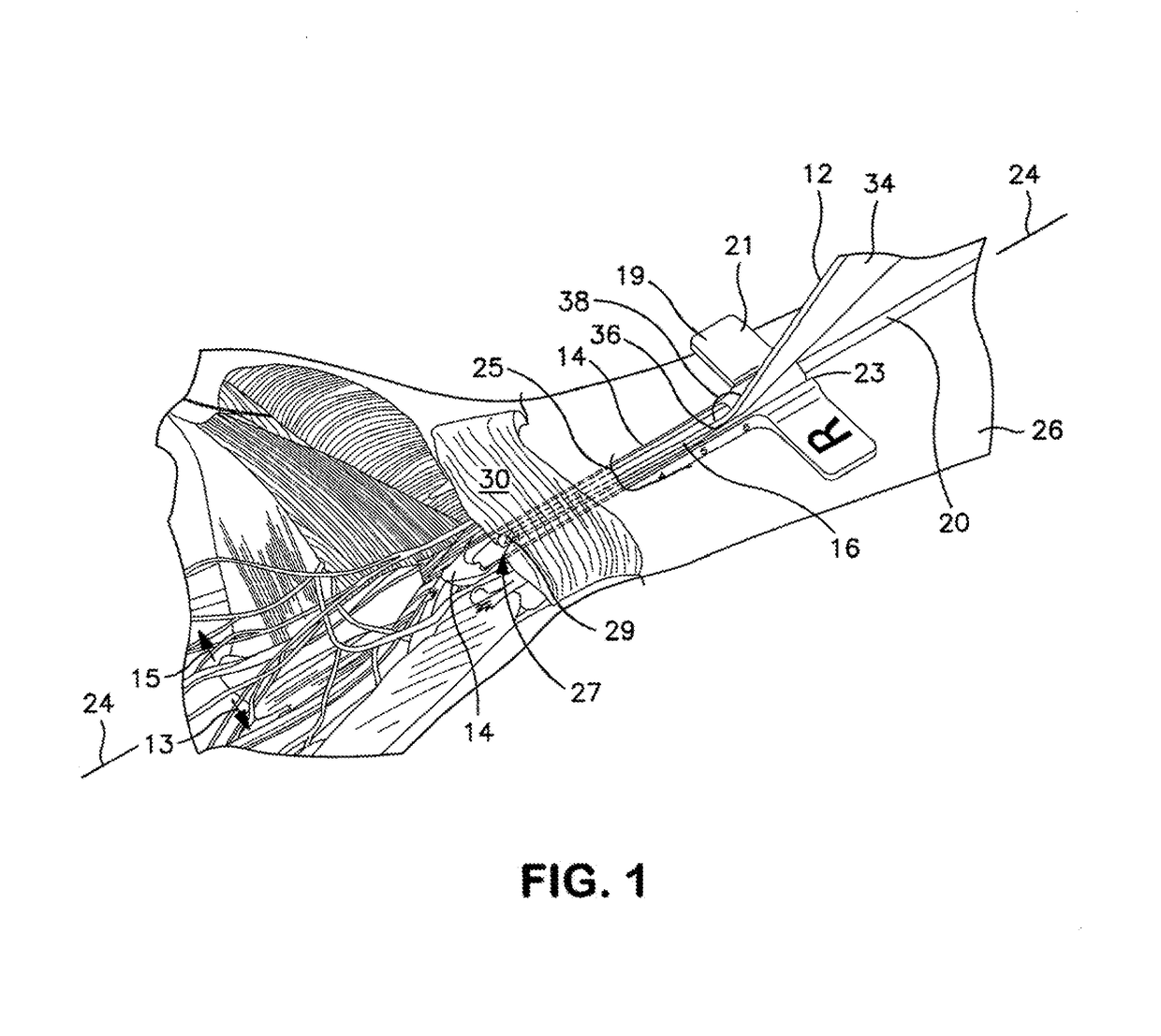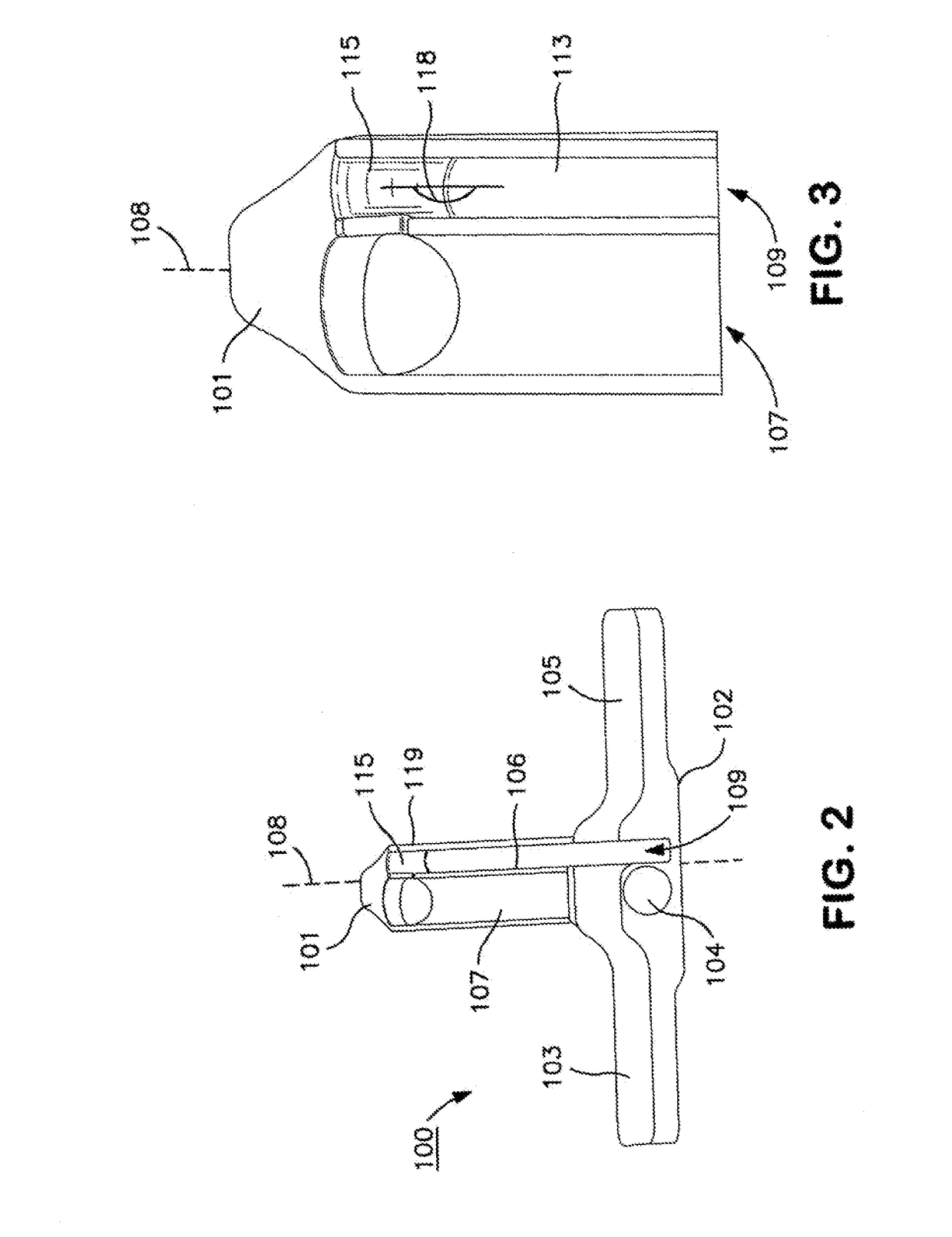Method and Apparatus for Endoscopic Ligament Release
a technology of ligament release and endoscopy, which is applied in the field of methods, apparatuses and systems for performing endoscopy ligament release surgery, can solve the problems of insanguination of nerves, numbness, pain in hand and fingers, etc., and achieve the effect of preventing ligaments and other anatomy and preventing the re-use of single-use devices
- Summary
- Abstract
- Description
- Claims
- Application Information
AI Technical Summary
Benefits of technology
Problems solved by technology
Method used
Image
Examples
first embodiment
[0027]FIG. 2 is a perspective view looking substantially from the proximal end of a guide member in accordance with the present invention. FIG. 3 is a close up view of the distal end of the guide member of FIG. 2. The guide 100 comprises a longitudinal member 101 and a transverse member 102. The transverse member comprising two wings 103 and 105 extended laterally from the proximal end 104 of the longitudinal member 101. The longitudinal member 101 defines two channels 107 and 109 separated by a partition, such as a ridge 106 in a surface of the longitudinal member for accepting a scope, such as an endoscope or arthroscope, and a knife, respectively.
[0028]One issue of which surgeons must be aware when using carpal tunnel release surgical systems of the type shown in FIGS. 1 and 2 is the fact that the cutting tip of the knife should remain concealed within the knife channel 109 so as not to accidentally engage anatomy when the knife is being inserted distally through the carpal tunne...
second embodiment
[0032]FIGS. 4A and 4B are right-side and left-side perspective views of the guide 200 illustrating another feature. Particularly, with respect to the human body, medical personnel generally adhere to certain semantic conventions for clarity. For instance, the term “medial” is generally used to describe a direction towards the center of the body, and the term “lateral” is generally used to describe a direction away from the center of the body. However, with respect to the hands, this language is not sufficiently definite because a person can hold one's hand in different orientations, e.g., with the palm facing towards the sky or with the palm facing towards the ground. Accordingly, the terms medial and lateral are indefinite with respect to hands. Hence, with respect to the hand, the terms “ulnar” and “radial” often are used instead. Ulnar refers to the direction from the center of the hand towards the ulnar nerve. The ulnar nerve runs along the length of the hand on the pinky side o...
third embodiment
[0036]FIG. 5 is a perspective view of the distal end of a guide 300 according to a Particularly, as previously described, the distal tip of the guide leads the guide into and through the carpal tunnel. The carpal tunnel is rather tightly packed with flexor tendons and the median nerve. Accordingly, tip 301 is shaped to better assist in dilating the carpal tunnel and spreading the various flexor tendons and radial nerve to create room for the guide to pass through the carpal tunnel.
[0037]More specifically, the distal tip 301 of the guide 300 is prow shaped in order to ease the insertion of the distal tip of the guide into the carpal tunnel and to assist in the dilation of the carpal tunnel and the spreading of the flexor tendons and the medial nerve to allow the longitudinal member 302 of the guide to pass through the carpal tunnel. As can be seen, the distal tip is shaped like the prow of a boat. Particularly, it is pointy without being sharp and it is curved upward slightly.
[0038]...
PUM
 Login to View More
Login to View More Abstract
Description
Claims
Application Information
 Login to View More
Login to View More - R&D
- Intellectual Property
- Life Sciences
- Materials
- Tech Scout
- Unparalleled Data Quality
- Higher Quality Content
- 60% Fewer Hallucinations
Browse by: Latest US Patents, China's latest patents, Technical Efficacy Thesaurus, Application Domain, Technology Topic, Popular Technical Reports.
© 2025 PatSnap. All rights reserved.Legal|Privacy policy|Modern Slavery Act Transparency Statement|Sitemap|About US| Contact US: help@patsnap.com



